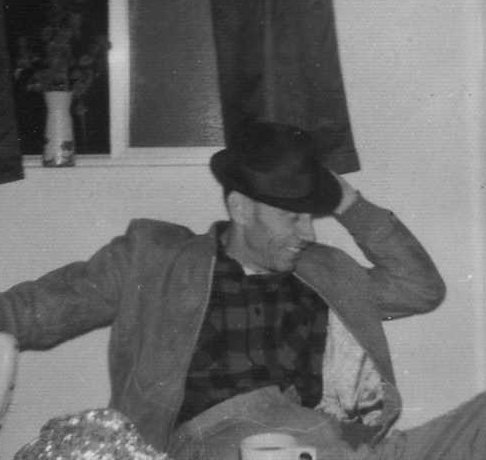I'm always the kind of person who wants to drill down to the source on most things. So, naturally when I started spinning yarn, I wanted to know everything about the process from "sheep to shawl". It also means I'm willing to try just about any step in the process short of actually owning livestock. I'm not a future alpaca farmer, but I do plan to cultivate many of them as friends. So far in exploring all things spinning related I've spun a wool, angora and silk roving, and dyed wool with Koolaid. My next step was to try a more professional dye with a number of different fibers.
At this year's Montpelier Fiber Festival I scored some delicious milk fiber, bamboo, and silk bells. I also had some brown, black and white roving that I got in a mill end bag from The Sheep Shed Studio. Armed with 2 ounces of each, my thrift store crockpot and a pack of Dylon fabric dye in Bahama Blue, I set about my experiment. I essentially did 2 dye lots in the same pot
I mixed the dye according to the instructions on the packet in my crockpot. This was super easy. This dye uses salt as a mordant. I used canning salt thinking that if it's strong enough for pickling then it must be strong enough for dyeing.
I put the wool and bamboo in first thinking that I would blend them together before spinning. The instructions on the packet say to stir for 15 minutes, but I just tamped it down instead because I wanted to make sure there weren't any air bubbles, but I didn't want to mix them together while they were wet. I added more hot water to make sure it was well covered and that I would be able to cover the other fibers once I added them. I let this sit for about 25 minutes.
Meanwhile, I soaked my silk cap and 2 ounces of milk fiber. I knew I wanted these to be lighter so planned for them to spend less time in the dye. After 25 minutes I added these to the dye bath and made sure they were saturated. I left this for another 20 minutes before taking them out.
Milk Fiber
I really can't wait to spin this it is wonderfully soft and the color looks terrific. It seems to have taken the dye pretty well the color really pops.
Silk
The biggest factor in the color differences in the silk is that it's in cap or bell form. So the inside layers barely got any dye at all while the outside layers seemed to take it in a very subtle way. I like these variations a lo. I haven't spun silk in this form yet, so that will be another interesting adventure.

Bamboo
Every time I walk by the drying rack, this one catches my eye. The color is electric and the fiber is so soft. I had originally planned to blend this with the wool to make it softer and add some more dimension to the color, but I'm clearly going to have to come up with something else. This color is too good to let it be overpowered by the brown and black.
Wool
This one is interesting. I'm not unhappy with the color that the white wool took on. The brown and black maintained their color, which I expected. I wanted this to be brown black and blue, so I got the result I was looking for. Still, when you compare this blue to the blue of the other fibers it's just not as bright. I'm planning on spinning this into a nice slubby singles that will be blue, brown and black twisted together.



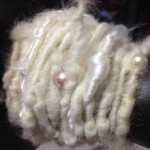
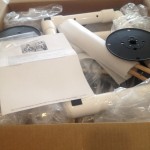
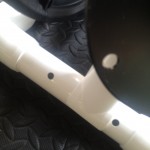
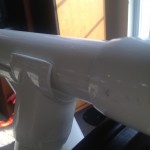
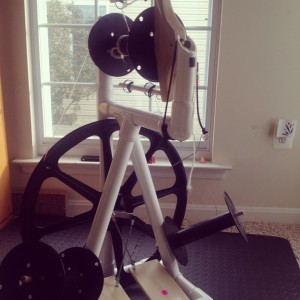
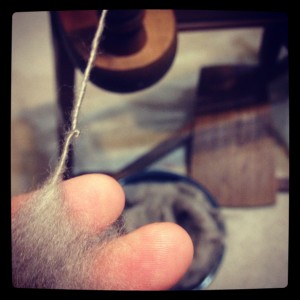
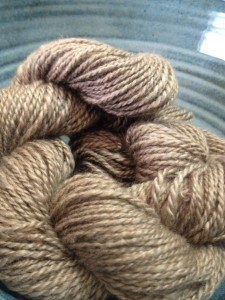
 ust about anything in the world. She grew up in a mill village in a small town in North Carolina, but my Granny never worked in the spinning room like so many girls of her generation. That was due to the determination of my great grandmother (the Original Granny). When most of the other girls in the village were dropping out of school at the ripe old age of twelve to go work in the mill, my great grandmother made sure that her children finished high school including her girls. So, when Granny graduated and went to work in the mill it was in the office, not on the floor. My
ust about anything in the world. She grew up in a mill village in a small town in North Carolina, but my Granny never worked in the spinning room like so many girls of her generation. That was due to the determination of my great grandmother (the Original Granny). When most of the other girls in the village were dropping out of school at the ripe old age of twelve to go work in the mill, my great grandmother made sure that her children finished high school including her girls. So, when Granny graduated and went to work in the mill it was in the office, not on the floor. My 




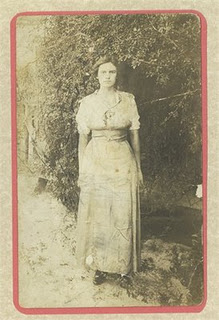 The striking young woman in this photo is my great great aunt Mattie Verb
The striking young woman in this photo is my great great aunt Mattie Verb 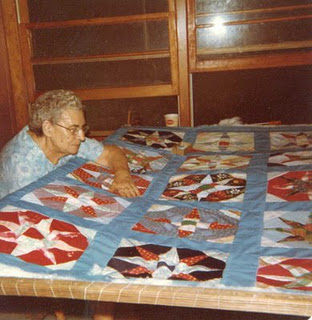 y grandmother to take care of Mattie before she died. But the truth is it was because we loved having her around. She's been gone 23 years now, but I can still hear her gregarious laugh. She always had a way of finding things to laugh about, be happy about, even in her late eighties when she rarely left the house. I remember going with my grandmother to visit Aunt Matt in her little house in the mill village and sitting on the ottoman next to her chair and watching her crochet. She was so practiced that she sped through the stitches and rarely had to look down at her work. Even late in life when her health was waning, she never stopped making things.
y grandmother to take care of Mattie before she died. But the truth is it was because we loved having her around. She's been gone 23 years now, but I can still hear her gregarious laugh. She always had a way of finding things to laugh about, be happy about, even in her late eighties when she rarely left the house. I remember going with my grandmother to visit Aunt Matt in her little house in the mill village and sitting on the ottoman next to her chair and watching her crochet. She was so practiced that she sped through the stitches and rarely had to look down at her work. Even late in life when her health was waning, she never stopped making things. I've made a lot of really beautiful things in my years as a
I've made a lot of really beautiful things in my years as a 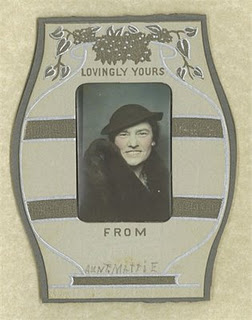 *This is a re-post of an article I wrote for a now defunct blog about my craft business.
*This is a re-post of an article I wrote for a now defunct blog about my craft business.